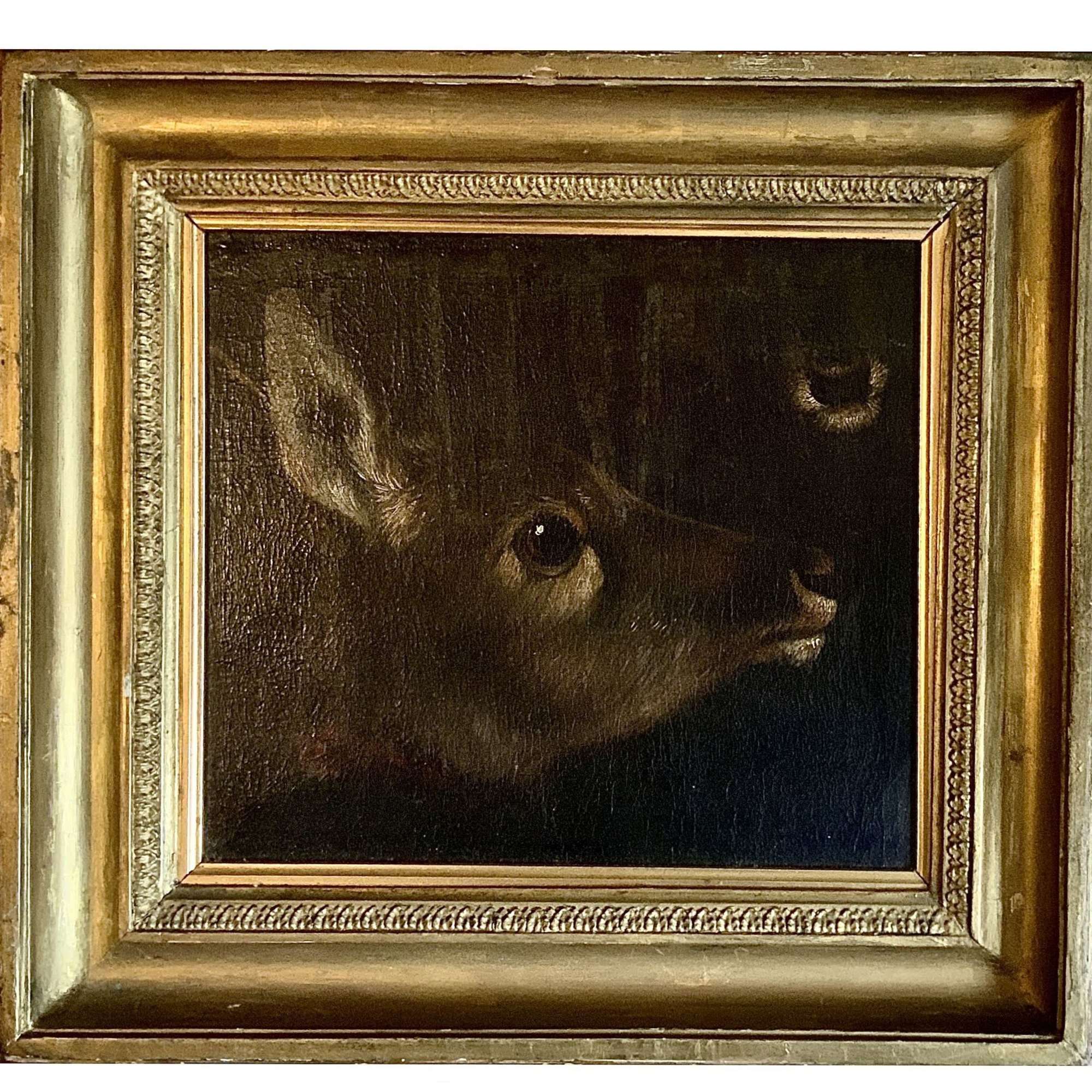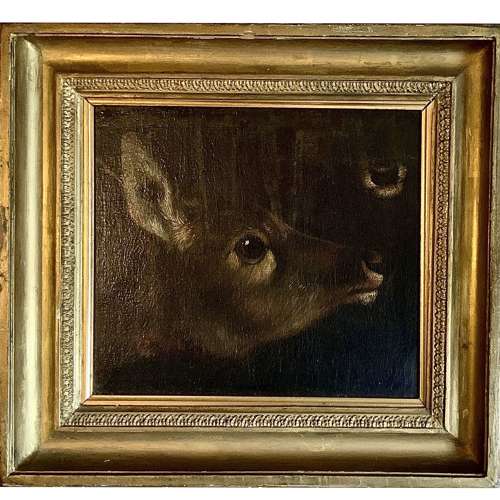

“Study of Head & Muzzle of a Mammal” English School 18th/19th Century
Delivery Quote Request
Please fill in the form below to request a delivery quote from Tregeagle Fine Art.
Contact Tregeagle Fine Art
 Oxfordshire, United Kingdom
Oxfordshire, United Kingdom
Simply fill in the below form to get in touch with Tregeagle Fine Art regarding this item.
About this item
“Study of the Head and the Muzzle of a Deer or, Possibly, a Kangaroo”
English School
Late 18th/Early 19th Century
Oil on Canvas, Framed
Measures:-
29.7 cm high x 33.8 cm wide (canvas)
40.5 cm high x 44 cm wide (framed)
Provenance:-
Stretcher bears an old (Christie's (?)) stencil "22AP".
The frame with an old inventory notation "No.?".
The Collection of a Cambridge Academic.
A very interesting 18th/19th Century painting with a study from nature of the head of a mammal, a further detail of the animal's nose and muzzle (top right). The head may be that of a member of the Cervidae (deer) family - but there is a very real and intriguing possibility that the painting depicts a creature from the genus Macropus (kangaroo) - possibly the head of an Eastern Grey Kangaroo (Macropus giganteus).
In 1771 Captain James Cook returned to London with the pelt of the first kangaroo to be seen in London. From this animal skin, along with eye-witness accounts of the creature, a painting was made by George Stubbs entitled "The Kongouro from New Holland" which was exhibited at the Society of Artists in London in 1773 (now in the National Maritime Museum). Stubb's image was engraved and published later in the same year as "The Kanguroo an Animal found on the Coast of New Holland" in John Hawkesworth’s "An account of voyages undertaken … for making discoveries in the Southern Hemisphere".
Having been unheard of only a decade or two earlier, the first live kangaroos arrived in London in 1791 and were displayed with other exotic animals like elephants, tigers, lions and zebras at Gilbert Pidcock's Menagerie at the Lyceum and Exeter Change in Strand, attracting a great deal of attention. Queen Charlotte kept a specimen in her menagerie at Kew and by 1799/1800 Pidcock‘s menagerie could boast of six live examples - alongside the first Black Swan. In October 1800, the first kangaroo was born in captivity in England.
This painting dates to around this exact period and as it seems, rather unusually, to depict the severed head of an animal specimen, which is otherwise made to seem quite animated, it is quite possible that the artist was endeavouring to record the anatomy and morphology of a newly encountered kangaroo, rather than that of a deer. These animals resemble one another and fill similar ecological niches, but further plausibility is added to the possibility that a kangaroo is depicted by the location of the animal's neckline in relation to the head.
Two paintings of kangaroos dating to around 1800 and attributed to John William Lewin (1770–1819) are believed to be the first images of kangaroos painted in their natural habitat. These can be found in the Hunterian Museum at the Royal College of Surgeons. It would be very interesting to be able to add a further early image of a Macropus specimen to the known iconography.
Unsigned.
Condition:-
Relined in the 20th century. Historic craquelure, visible water marking.
Additional Information
11104 (AB-150373)
W: 33.8cm (13.3")H: 29.7cm (11.7")
18th Century, 19th Century
![]() Oxfordshire, United Kingdom
Oxfordshire, United Kingdom











